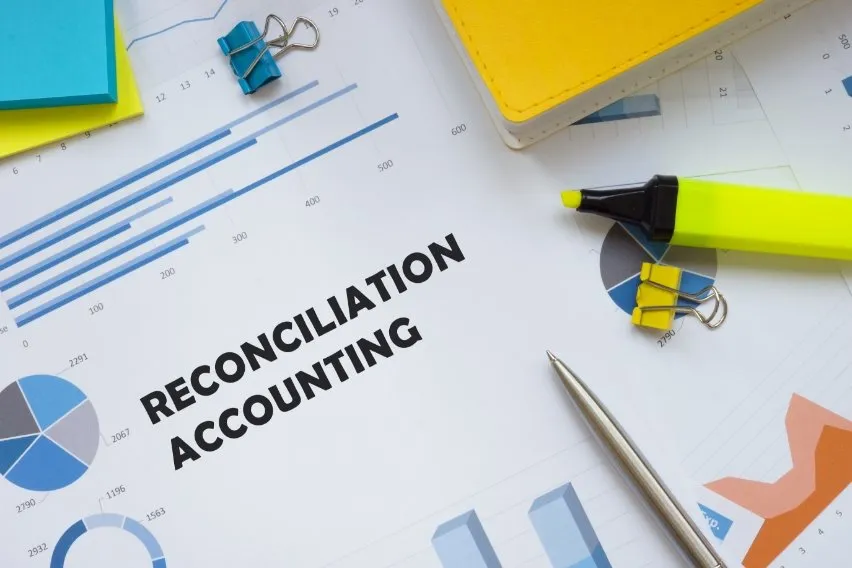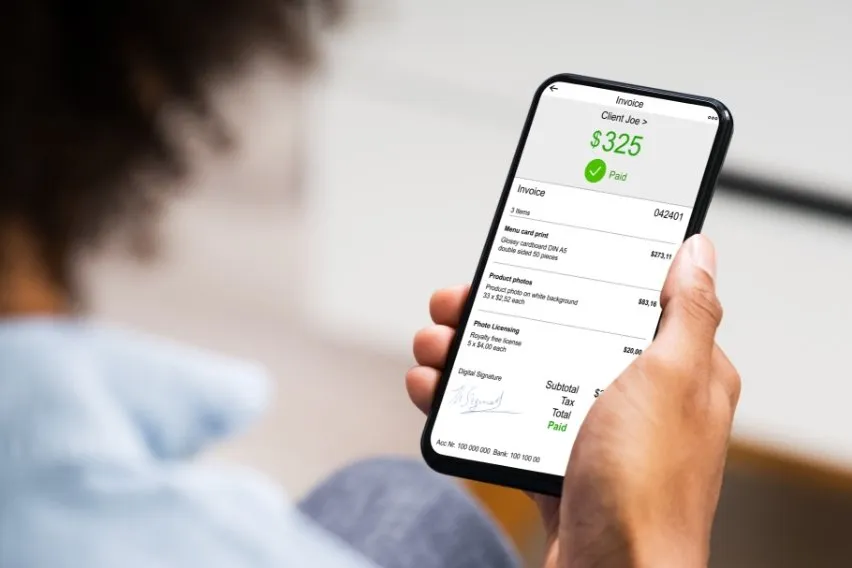What is Reconciliation in Accounting?

Balancing financial records is a fundamental principle in any company or business. There are several processes you could use to complete the task. Reconciliation of account balances is the most conventional method.
This works by comparing 2 sets of records and is a way of making sure all the figures are correct and match up. Reconciliation has become a byword for consistency, accuracy, and thoroughness. It can sift out fraud and unexplained entries. The result can help businesses run more efficiently.
Find out how it all works as we examine the benefits of different types of reconciliation in accounting.
Table of Contents
What Is Reconciliation in Accounting?
How Does Account Reconciliation Work?
Benefits of Account Reconciliation
Why Should You Reconcile Your Accounts?
What Is Reconciliation in Accounting?
In accounting, reconciliation refers to a process a business uses to ensure that 2 sets of accounting records are correct. The goal is to make sure these 2 accounts match up with one another.
A business will observe the money leaving its accounts to calculate whether it matches the actual money spent. Reconciliation is also used to ensure there are no discrepancies in a business’s accounting records.
Achieving reconciliation gives businesses confidence. It provides an opportunity to record their cash position and forecast their cash flow with a higher degree of accuracy.
Digital technology has revolutionised reconciliation. It was once a laborious manual process involving pieces of paper. Now cloud accounting software has made the whole process more efficient.
Types of Reconciliation
There are 5 major kinds of reconciliation in accounting. We refer to them as bank, vendor, customer, business-specific, and intercompany reconciliation.
The basic tenet is the same for each: to balance 2 sets of accounting figures. How these sets get put together varies on the industry sector and type of business concerned. Let’s take a closer look at each kind of process.
Bank Reconciliation
Bank reconciliation is a key part of a company’s internal controls over its assets. It is the process to ensure that the information in your business’s accounting records and bank account statements matches up.
You would need to justify, explain, or correct any differences or discrepancies. When there are no unexplained differences, an accountant is able to sign off the process. They can then declare that you’ve reconciled your bank account.
Vendor Reconciliation
This is the way you would cut out vendor-related inaccuracies. These errors would relate to issues between what a vendor is charging you and the inventory, services, or supplies that you have received.
Budget controllers can keep a tight leash on spending through this match-making exercise. They’ll check that the invoices your company must pay mirror the goods or services you took delivery of.
Failure to engage in the process can be costly. It could mean you never find out that you’re paying for goods or services you didn’t receive.
Customer Reconciliation
This generally takes place at the end of the month as part of the account closing process. This would be immediately before a business puts out its monthly financial statements.
Businesses carry the process out by matching up certain invoices. These will then get submitted to their accounts receivable ledger records.
The process is particularly valuable for companies that offer credit options to their customers. Accountants can compare the amounts received with the amounts unpaid. They can then look for errors in the accounting records for customers and correct these when necessary.
Intercompany Reconciliation
Parent companies use this to bring together all the accounts and ledgers from the subsidiaries they may have. The process looks for mismatches both within and between any of the subsidiaries.
A company would then be able to put right any mistakes in its financial statement. The result would give a far more accurate picture of the company’s true financial status.
Business Specific Reconciliation
This process requires you to compare internal records at the beginning and end of a financial cycle. It will let you see if the goods you sold or services you provided match up with your internal records.
The type of industry tends to determine the specifics related to this reconciliation. For instance, financial organisations often need to carry out the process more often than others.
How Does Account Reconciliation Work?
There is no set way to carry out an account reconciliation. But, generally accepted accounting principles (GAAP) demand double-entry accounting.
This typically involves the entry of a transaction into the general ledger in 2 separate places. In many companies, this would be a credit account and a debit account that show accounts payable.
One account will get a debit, and the other account will receive a credit for the same transaction. For instance, when a company conducts a sale, it debits either cash or accounts receivable on its bank statement balance sheet. At the same time, it credits sales revenue on its income statement.
Here are 4 typical steps involved with account reconciliation:
- Check the opening balances agree
- Record the difference in the closing balances
- Cross reference new activity from the external document
- Review the closing balance and make a reconciliation report if necessary
Using a Double-Entry Accounting System
Let’s say Johannes starts a car valeting company. He ploughs in 20,000 ZAR of his savings as start-up funding. He uses this to purchase the car cleaning equipment he needs. He then uses that to complete his first car valeting job.
Using the double-entry accounting system, he credits cash for 20,000 ZAR and debits his assets (the car cleaning equipment) by the same amount. For his first job, he credits 5000 ZAR in revenue and debits an equal amount for accounts receivable. Johannes has therefore achieved reconciliation because both his credits and debits are equal.
Smaller businesses may use a simpler account conversion method instead. Here, they’d match records like receipts or cheques with entries in the general ledger. This is a bit like carrying out a personal accounting reconciliation using credit card receipts and a statement.
Benefits of Account Reconciliation
The process of account reconciliation instils confidence. This is true for both those within a company and those looking in from the outside.
In a general sense, it demonstrates that balancing the books gets taken seriously. It’s evidence of sound financial management. That can be vital should a company need to borrow, attract investors, or even put itself up for sale.
It also helps to flag any discrepancies, mistakes, or fraud in the company’s books. Any of these could have a serious detrimental impact on the financial health of a company. So, businesses should perform regular check-ups because these can contribute to their success.
Benefits Specific to the Process Type
When a parent company has several subsidiaries, the process helps identify assets. It builds a clear picture of which assets belong where. It will look for mismatches within and between any 2 or more subsidiaries. These may be the result of billing mistakes related to loans, deposits, and payment processing activities.
Vendor reconciliation can improve relationships with clients and sellers. It can reduce vendor queries and make control of spending much more efficient.
Why Should You Reconcile Your Accounts?
The process is important because it ensures that you can weed out any unusual transactions caused by fraud or accounting errors.
For a business, the practice can also help you manage your cash flow and pick up on any inefficiencies. It is essential for generating accurate tax returns. This can in turn lead to significant savings.
The more you reconcile any kind of account, the more likely it is that you will pick up discrepancies. That allows for swifter and more effective action and resolution. It also enables you to monitor cash flow and control the potential for theft.
Key Takeaways
The reconciliation process balances 2 sets of figures with the aim of both being equal. These records will sometimes be internal and other times external. Reconciliation then lets those managing the process ensure that the figures are correct and in agreement. It helps eliminate fraud and any accounting errors, helping a business be more efficient.
There are 5 main recognised kinds of reconciliation accounting that are industry-wide. These processes demonstrate a company’s focus on accuracy and thoroughness.
In the double-entry accounting process, all transactions get posted as both debits and credits. Individuals could also use the process to verify the accuracy of their banking and credit card accounts.
You can use different sets of figures depending on what you are trying to achieve. In business, this would typically mean debits recorded on a balance sheet and credits on an income statement.
Other types of accounts might use different sets of figures. The principles of double-entry accounting would remain the same.
Regardless of where the figures get taken from, the goal would also be similar. And the end result is always to find a zero balance between the 2 sets of figures.
FAQs on Reconciliation
What Is an Example of Reconciliation?
Let’s consider the purchase of a particular asset for a business. A company uses the asset with the purpose of generating revenue. It then makes sure that the purchase got logged correctly on both the balance sheet and income statement. So, the business records the purchase as a credit in the cash account and a debit to the asset account for reconciliation.
What Is Month-End Reconciliation?
The month-end process refers to certain double-entry accounting steps. These are necessary to review, record, and reconcile accounts.
The process begins in the general ledger. Payments get sent out and received during any given month. In a company, bookkeepers, clerks, and accountants keep a record of these debits and credits. These should match up with external accounts like bank statements for month-end reconciliation.
What Makes a Good Reconciliation?
Credits and debits should balance out at zero after reconciliation. When the process has worked well, it will have picked up on any inaccuracies or instances of fraud. There should also be enough time for you to fix those errors.
RELATED ARTICLES



 Top 5 Free Accounting Software for South Africa
Top 5 Free Accounting Software for South Africa Drawings in Accounting: Definition, Process & Importance
Drawings in Accounting: Definition, Process & Importance Source Documents in Accounting: Definition, Importance & Types
Source Documents in Accounting: Definition, Importance & Types Cash Receipts Journal: Definition, Types, Pros & Cons
Cash Receipts Journal: Definition, Types, Pros & Cons What Is a Nominal Account? Definition & Example
What Is a Nominal Account? Definition & Example How to Calculate Settlement Discount? A Guide
How to Calculate Settlement Discount? A Guide